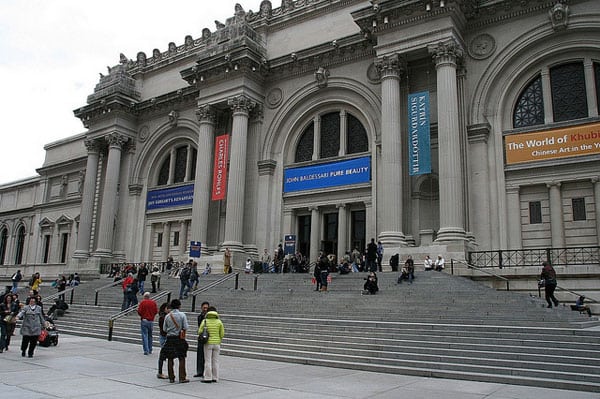
October 4, 2018; Smithsonian
Last week, for the first time in its history, and on the eve of the increasingly reimagined Columbus Day-cum-Indigenous People’s Day, the Metropolitan Museum of Art in New York City opened a show of Native American art in its American wing. Until now, such exhibits have been placed in the Met’s galleries for Africa, Oceania, and the Americas, as has been par for the course in many US Museums. In this case, the donors, Charles and Valerie Diker, required that the museum include the art where it belongs, as a part of this country’s narrative.
“The presentation in the American Wing of these exceptional works by Indigenous artists marks a critical moment in which conventional narratives of history are being expanded to acknowledge and celebrate the contributions of cultures that have long been marginalized,” said Met director Max Hollein, adding that the Dikers “forever transformed the Met’s ability to more fully display the development of American art, enabling an important shift in thinking.”
That is hard to hear—that it was the requirement of a donor that enabled a long-overdue shift away from a colonialist positioning so exclusionary that Native Americans were relegated more easily to galleries devoted primarily to other nations.
All of this is, of course, occurring in the context of the growing awareness and action about the lack of diversity among museum curators. Readers should look for our podcast on this topic tomorrow.
Sign up for our free newsletters
Subscribe to NPQ's newsletters to have our top stories delivered directly to your inbox.
By signing up, you agree to our privacy policy and terms of use, and to receive messages from NPQ and our partners.
The donors, Charles and Valerie Diker are also founding chairman and chairwoman of the National Museum of the American Indian’s George Gustav Heye Center in New York. Randy Kennedy of the New York Times described last year the state of the curatorial thinking in the United States on Native American art:
While some American art museums—among them the Denver Art Museum, the Nelson-Atkins Museum of Art, the Brooklyn Museum, the Art Institute of Chicago and the Montclair Art Museum in New Jersey—have notable collections of Native American work, many large encyclopedic institutions continue to have spotty holdings. And the sometimes-troubled history of sizable collections of Native art in natural history museums, where the work is usually presented ethnographically, underscores those gaps. The National Museum of the American Indian in New York and Washington, considered one of the world’s best collections, has bridged some of the gaps. But curators describe an immense distance yet to be traveled before Native American art is given its due in public collections.
“Art of Native America: The Charles and Valerie Diker Collection” includes 116 pieces from more than 50 different Native American cultures going back to the 2nd century. Many of the pieces either already have been or will be donated with the express requirement that they be shown with other American art.
Sarah Cascone, writing for ArtNet, says, “In other countries, it is common to present indigenous art as part of the wider arc of a nation’s art history.” Sylvia Yount, the curator in charge of the wing, told Brigit Katz at Smithsonian that US museums, including the Met, are “really behind the curve…when it comes to displaying indigenous artworks within the framework of America’s art history.”
In an interview with the New York Times last year, Yount admitted that “[Visitors] go through and expect to see Native American work here…because often where they come from, indigenous art is part of the narrative of a nation’s art, in a way that it’s not in the United States.”—Ruth McCambridge













